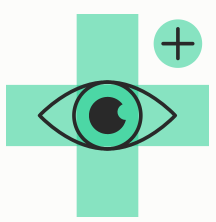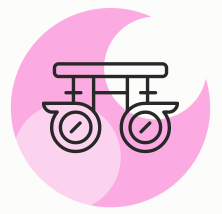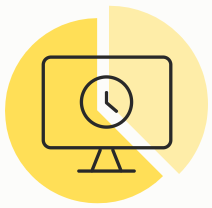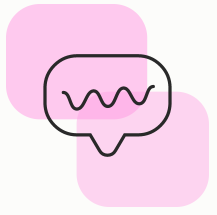Wat is bijziendheid?
Myopia is an eye condition that causes blurry long-distance vision, often called "short-sighted" or "near-sighted". A person with myopia can see clearly up close – when reading a book or looking at a phone – but words and objects look fuzzy on a blackboard, on television or when driving. But a pair of glasses aren't the whole story.
The prevalence of myopia in children is growing quickly worldwide. Myopia in kids tends to progress or get worse throughout childhood, and higher levels of myopia are associated with higher eye disease risks in adulthood. If your child already wears glasses, you can do something to slow their vision worsening. If they don't you can assess their risk of developing myopia.

Wat veroorzaakt myopie?
Babies & Toddlers
Children
Teenagers
Young Adult
Why should I be concerned about myopia?
Why does myopia develop?
Myopia can develop during childhood, adolescence or adulthood, and can be caused by a variety of different factors, some of which are out of our control.

Too much close work
Spending more time on close work has been linked to development of myopia. This includes reading, drawing, playing computer games, and using smartphones or tablets. The rise in the popularity of handheld devices means that children are now exposed to close work from younger and younger ages, putting them at a higher risk of myopia development.

Genetics
While it is often linked to environmental factors, myopia can also be hereditary. A person with one short-sighted parent has 3 times the risk of developing myopia, or 6 times the risk if both parents are short-sighted. Research also suggests a link between Asian ethnicity and faster progression of myopia, with a higher worldwide rate in this group.

Under- or over-corrected vision
Under- or over-corrected vision has been shown to promote the onset and accelerate the progression of myopia. Not wearing the correct glasses prescription, or not wearing glasses when they are needed, can cause eye strain that distorts the shape of the eye, leading to short-sightedness.
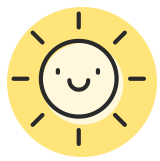
Not enough time outdoors
Research has found that spending time playing outside as a child may reduce the chances of becoming short-sighted, and may slow the progression of existing myopia. This may be related to light levels outdoors being much brighter than indoors. Both sport and relaxation outdoors appear to be beneficial in reducing the risk of short-sightedness.
How can I slow myopia progression?
Understanding the causes and symptoms can help to reduce the risk of myopia in your child, or slow down its progression.

Further reading if your child is already myopic.
As well as the steps outlined above, there are a number of options available to slow the progression of myopia and minimise worsening vision and the risk of more serious eye health concerns.
Special types of spectacles and contact lenses currently offer the best vision correction options to slow the progression of myopia, although some work more effectively than others. Standard types of spectacles and contact lenses don’t offer the benefit of slowing myopia progression, and will only correct your child’s blurred vision.
Atropine eye drops have also been shown to slow the progression of myopia. Different concentrations have different effectiveness, so it might take time to find the right option for your child. It’s important to note that these eye drops don’t correct vision, so your child will still need spectacles or contact lenses.
For more advice on slowing the progression of myopia, head to our knowledge centre. Our clinical website for eye care professionals, Myopia Profile, also provides more detail.





